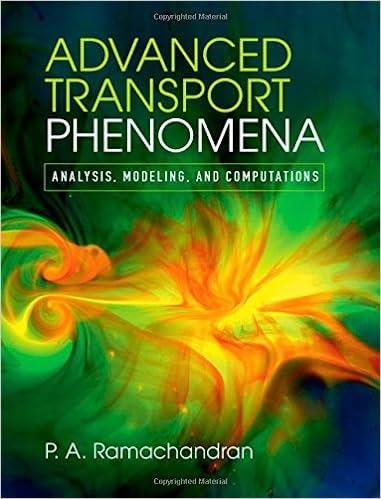Consider the above problem of gas absorption, but now for the limit for large values of (k
Question:
Consider the above problem of gas absorption, but now for the limit for large values of \(k t\), and show that
\[N_{\mathrm{A}, \mathrm{s}}=C_{\mathrm{A}, \mathrm{s}} \sqrt{D_{\mathrm{A}} k} \text { for } k t \gg 1\]
The solution error is \(3 \%\) for \(k t=2.0\).
Find the total quantity of gas absorbed from time 0 to \(t_{\mathrm{E}}\) for this case.
Find the average rate of absorption.
Compare your answer with the film model. State why there is no difference between the penetration model and the film model.
Above problem:
For gas absorption with a semi-infinite region with reaction show that the following limiting values for the flux into the system can be derived starting from the detailed equation in the text:
\[
N_{\mathrm{A}, \mathrm{s}}=C_{\mathrm{A}, \mathrm{s}} \sqrt{\frac{D_{\mathrm{A}}}{\pi t}}(1+k t) \text { for } k t \ll 1
\]
The solution error is \(5 \%\) for \(k t=0.5\).
Find the total quantity of gas absorbed up to \(t_{\mathrm{E}}\) for this case.
Find the average rate of absorption.
If the average rate is divided by \(k_{\mathrm{L}} C_{\mathrm{A}, \mathrm{s}}\) we can obtain an expression for the enhancement factor. Here \(k_{\mathrm{L}}\) can be calculated using the penetration model.
Step by Step Answer:

Advanced Transport Phenomena Analysis Modeling And Computations
ISBN: 9780521762618
1st Edition
Authors: P. A. Ramachandran





